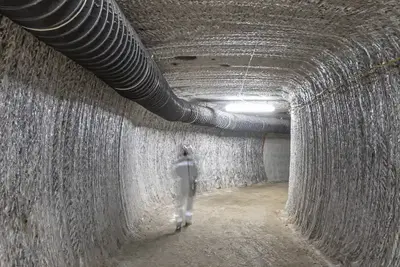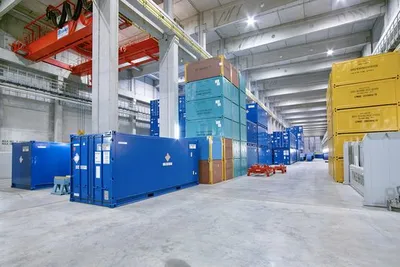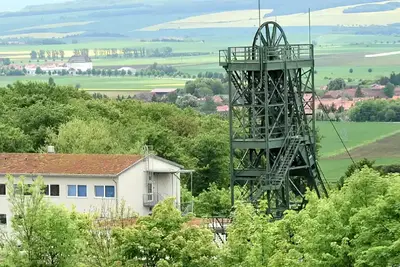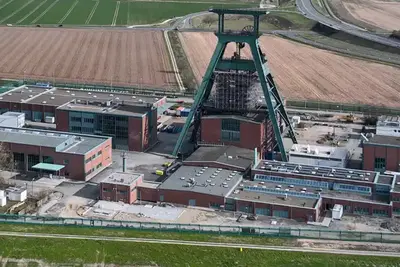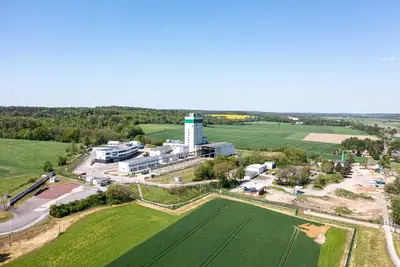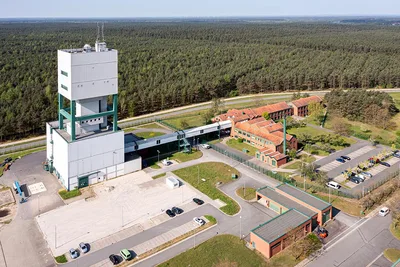Current inventory
- Storage facilities and facilities commissioned by the state collection points currently hold over 130,000 cubic metres of radioactive waste.
- The volume of radioactive waste will increase sharply by the middle of the century due to the dismantling of nuclear power plants.
- Storage and subsequent disposal must be carried out using special, officially approved containers.
Over 130,000 cubic metres of low- and intermediate-level radioactive waste are currently (reference date: 31.12.2022) stored in storage facilities throughout Germany. Most of this waste has already been processed and packed in a manner suitable for disposal, but only a small proportion has already undergone the examination procedures for disposal. In addition, there are several hundred storage containers (Castor containers) containing high-level radioactive waste in German storage facilities.
By the end of 2016 (calculation basis), around 15,000 tonnes of heavy metal (uranium and plutonium) had arisen in Germany in the form of spent fuel elements from power reactors. This includes fuel elements from nuclear power plants that are still in operation and from those that have been shut down and partly decommissioned. The Federal Republic of Germany sent around 6,500 tonnes of this waste to France and the United Kingdom for processing.
In addition, research and demonstration reactors have given rise to around 190 tonnes of spent fuel elements that have predominantly been sent for reprocessing. The materials that were suitable for continued use after processing were used for new fuel rods. The radioactive waste that arose during the production of the “mixed oxide fuel elements” from reprocessing has been returned to Germany or will be returned.
In Germany, special containers have been developed, tested and approved for the different types of waste. The high-level radioactive materials, which are also highly heat-generating, can be transported and held in storage in Castor containers. Other containers are used for less-radioactive waste with negligible heat generation.
Prediction
An effective prediction can be made of the total order of magnitude of radioactive waste arising. Experts anticipate around 10,500 tonnes of high-level radioactive waste from fuel elements by the year 2080. The volume that will subsequently have to be emplaced in a repository depends on the container concept, which must be adapted to the host rock of a future repository site. Previous calculations assumed a volume of around 27,000 cubic metres of high-level radioactive waste. Different container concepts may yield different figures in the future. In addition, the planning also assumes around 300,000 cubic metres of low- and intermediate-level radioactive waste.
The volume of waste from the enrichment of uranium and the retrieval of radioactive waste from the Asse mine can only be estimated. In this context, assumptions are currently being made that are intended to encompass the maximum expected volume. For the waste from the Asse mine, the Federal Republic of Germany has identified an order of magnitude of up to 220,000 cubic metres in its National Waste Management Programme. For the residues from uranium enrichment, this figure comes to 100,000 cubic metres. If possible, a repository site is to be identified for this waste as part of the search for a repository site for especially heat-generating radioactive waste.
Initially, the volume of low- and intermediate-level radioactive waste will rise sharply in light of the pending dismantling of nuclear power plants. By 2060, the around 130,000 cubic metres that are present today will increase by around a further 170,000 cubic metres. These approximately 300,000 cubic metres will subsequently be emplaced in the Konrad repository. Only small quantities of radioactive waste will then arise in the second half of the century.
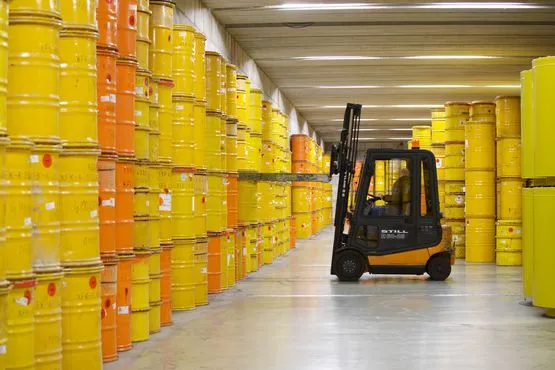
The barrel storage in Karlsruhe
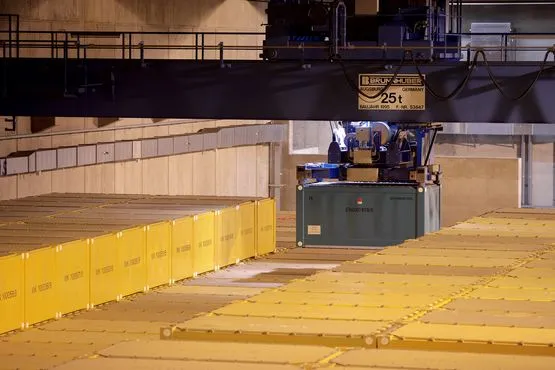
The container storage in Karlsruhe


